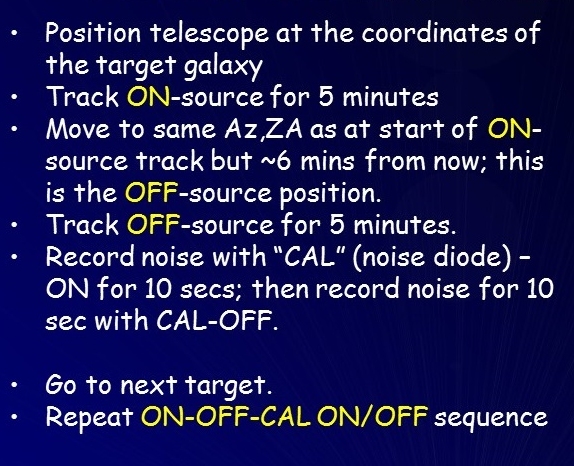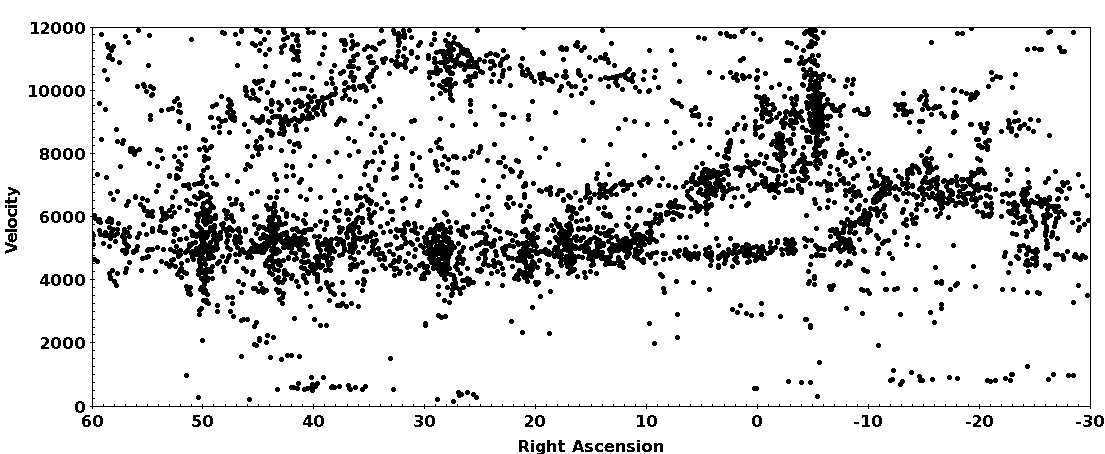Useful links related to Arecibo observing:


| Try to finish this activity by 8 pm on Wednesday evening |
|
We also need a way to figure out the intensity calibration of the system noise. At the GBT,
we observe a continuum source (quasar) at the start of the observing run. At Arecibo,
we inject the noise from a diode (whose noise has been measured by the engineers in the lab)
into the system and also record the noise when the diode is "off". This sequence is referred
to as the "CAL ON/CAL OFF" sequence; we perform this measurement at the end of every
target galaxy position-switched
ON/OFF pair. A single observation of an APPSS target source then includes both the ON/OFF source
observation and the CAL ON/OFF calibration sequence, as summarized by
the panel to the right.
Often we observe a source more than once, often on a different day,
for example, if there is a marginal detection whose reality we would like
to confirm.
It is possible to combine multiple observations of the same source to
improve the signal-to-noise ratio.
Useful links related to Arecibo observing: |

|
 c. Which figure in the Wegner et al. paper is similar to this figure?
What is different about the one displayed here?
c. Which figure in the Wegner et al. paper is similar to this figure?
What is different about the one displayed here? f. What do we mean by "heliocentric velocity"?
f. What do we mean by "heliocentric velocity"?| Name | Common Name | R.A.(J2000) (deg) | Dec(J2000) (deg) |
cz (km/s) | N7343 | Pegasus | 339.7 | 34.0 | 6000. |
|---|---|---|---|---|
| Abell 2634 | 354.6 | 27.0 | 9400. | |
| Abell 2666 | Pegasus | 357.7 | 27.2 | 8000. |
| N 383 | Pisces | 16.9 | 32.4 | 4800. |
| N 507 | 20.5 | 33.3 | 4700. | |
| Abell 262 | 28.2 | 36.2 | 4800. | |
| Abell 347 | 36.5 | 41.9 | 5600. | |
| Abell 426 | Perseus | 49.7 | 41.5 | 5500. |